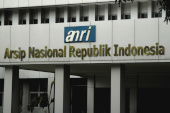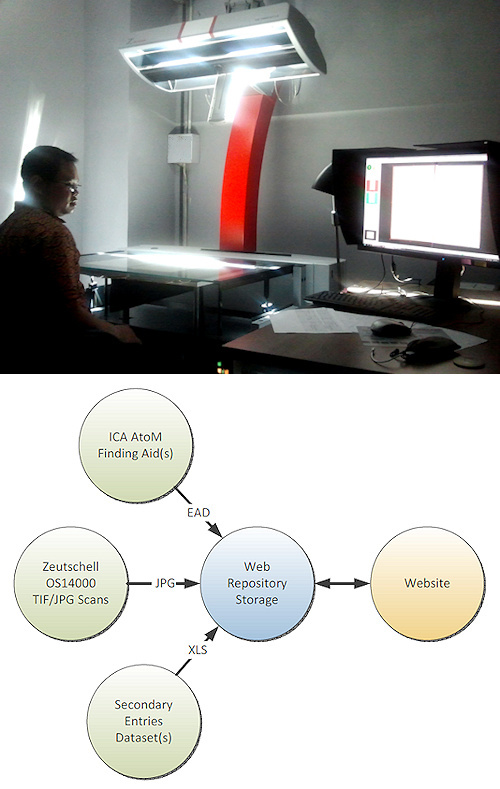Digital Preservation

Original paper archives from the seventeenth and eighteenth centuries have been decaying for a long time and continue to suffer heavily from ink corrosion, acidification, browning and fading. In 2012, after a preparatory year, ANRI and the Corts Foundation built a high-tech scanning street to start digitising ANRI’s large collections of oldest handwritings. This conservation part of the project is called DASA: Digital Archive System at ANRI. Digitising is not like regular document scanning. It is a way of conservation as the digital image will in time replace the original paper manuscript.

After digitization, the paper archives are still preserved in the depot but are no longer accessible by the general public. Paper archives continue to be in a process of decay. Performed with objective specifications and optical measurements digital conservation is called ‘preservation imaging’: the content of fragile paper material is transferred to another storage medium by digitisation. A digital depot is created to preserve the content of the original paper archive. Digitisation is a method of content conservation.
Preservation imaging requires a sophisticated approach. It may be done with digital photo cameras or book scanners. ANRI and the Corts Foundation have chosen for a Zeutschel OS 14000 A1 overhead scanner that handles the often heavy volumes very well. Perfectly calibrated in the German Zeutschel factory in Tübingen, a very high quality of 3D colour scanning was reached from the very beginning. With the assistance of Dutch experts, the scanning is performed according the Metaformoze Preservation Imaging Guidelines 1.0 (April 2012). For further details researchers are directed to the guidelines on the metamorfoze website.
Digitising according to one of the best objective quality standards in the world is complemented by good long-term storage. Thousands of scans have to be stored in such a way that the relation to the physical original remains traceable via an archive management system. High quality imaging of the original archive volumes and the structuring of a good archive management system are crucial elements for mass preservation.
The scanning at ANRI is performed by a team of trained operators and IT-experts from ANRI’s preservation and IT-unit. Two teams of two operators perform the Universal Test Target (UTT) and image analyses on a daily basis. A well organized work flow guarantees a weekly output of 4,000 to 5,000 scans in both TIFF and JPG.




